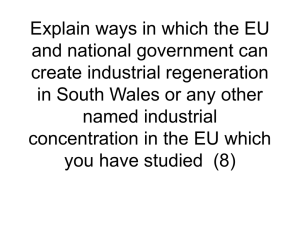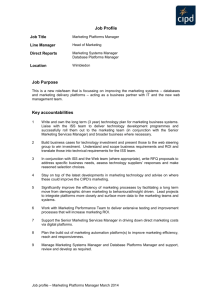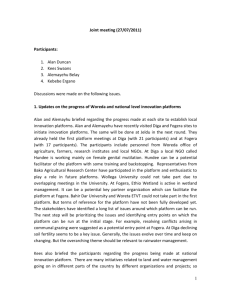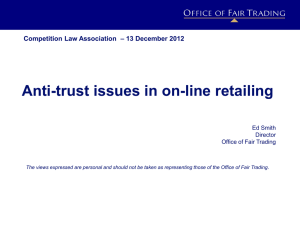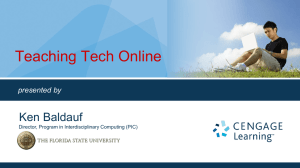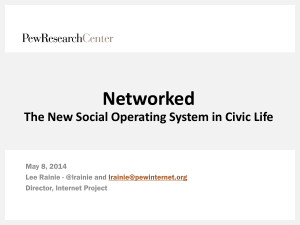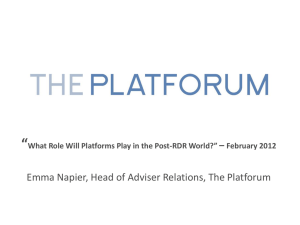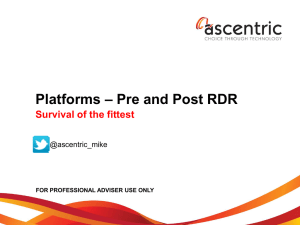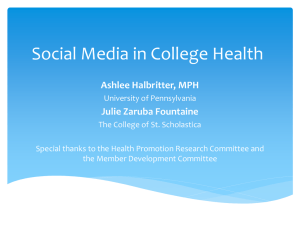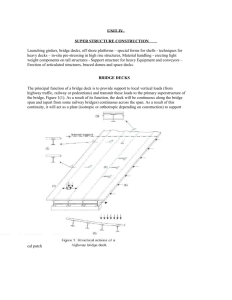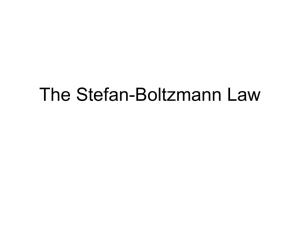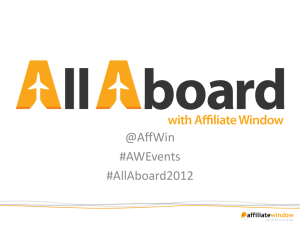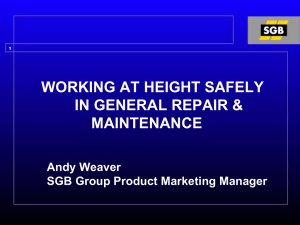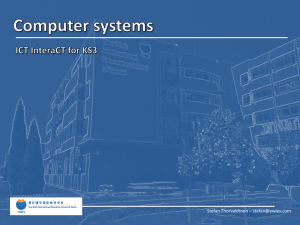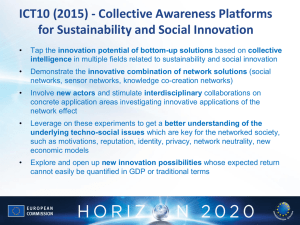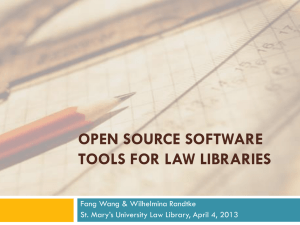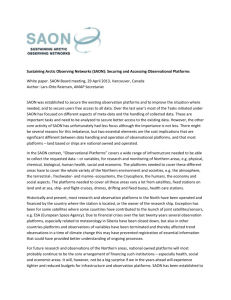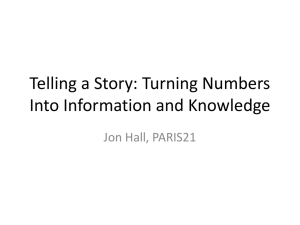Definition Social Media Applications
advertisement
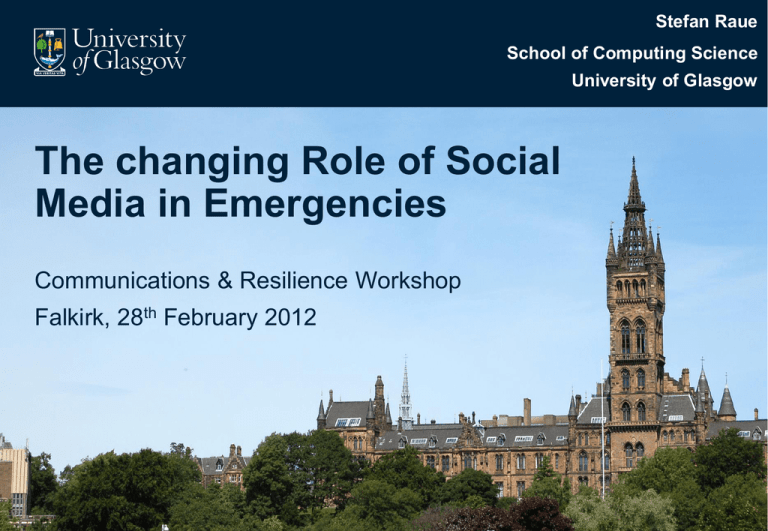
Stefan Raue School of Computing Science University of Glasgow The changing Role of Social Media in Emergencies Communications & Resilience Workshop Falkirk, 28th February 2012 Definitions Social Media Applications Social Media Applications: “[..] a group of Internet-based applications that build on the ideological and technological foundations of Web 2.0, and that allow the creation and exchange of User Generated Content.” (Kaplan & Haenlein, 2010) Definition Social Media Applications - Examples Category: Blog Definition: …is “a personal website or web page on which an individual records opinions, links to other sites, etc. on a regular basis.“ (Oxford Dictionary) Random Facts: Other Platforms: • More than 180 million blogs on the Internet • 270,000 words are written on Blogger every minute (2009) Definition Social Media Applications - Examples Category: Microblog Definition: …is a website that allows “the posting of very short entries or updates [..], typically via a mobile phone.” (Oxford Dictionary) Random Facts: Other Platforms: • more than 500 million registered users on Twitter • more than 250 million tweets a day • more than 2800 tweets a second Definition Social Media Applications - Examples Category: Video and Photo Sharing Platform Definition: …also called content communities. They allow users to share visual content with the wider online community on the Internet. Random Facts: • more than 2 billion videos watched on Youtube every day • more than 6 billion photos on Flickr • more than 6,000 images uploaded to Flickr every minute Other Platforms: Definition Social Media Applications - Examples Category: Social Network Definition: …is a “network of social interactions and personal relationships.” It is a “dedicated website or other application which enables users to communicate with each other by posting information, comments, messages, images, etc..” (Oxford Dictionary) Random Facts: Other Platforms: • more than 845 million Facebook users (~425m active every day) • ~90 billion images uploaded to Facebook every year (250m / day) Social Media Levels of SMA Integration & Public Engagement INFORMATION PASSIVE MONITORING PUBLIC ENGAGEMENT DISSEMINATION ⓿ ❶ ❷ ❸ ❹ L E V E L O F S O C I A L M E D I A I N T E G R AT I O N ❺ BENEFIT ACTIVE MONITORING WITH OPERATIONAL USE PROACTIVE PUBLIC ENGAGEMENT Social Media Integration Information Dissemination – Megaphone approach Benefits: • control over the channels (when / what / how / which) • speed of information dissemination • size of audience • increased visibility of existing content / organisation Applications: • warning and informing the public • campaigning and risk communication Social Media Integration Passive Monitoring - Get to know your audience Benefits: • understand public’s perception / opinion • identify key stakeholders / influencers in communities, for specific topics, etc. Applications: • evaluation of own performance (e.g. popularity) • evaluation of campaigns (e.g. acceptance, range of influence) • static monitoring for specific events to gather information Social Media Integration Active Public Engagement – Listen & Answer & Ask Benefits: • shape public perception / opinion • be more accessible to the public • reduce load on other channels (e.g. hotlines) Applications: • provide direct advice to your audience in non-critical events • ask / request information (e.g. missing people, eyewitness) • counter rumours and misinformation • ensure communities on a personalised level Social Media Integration Active SMA Monitoring – Listen & Understand & Apply Benefits: • near real-time monitoring of incidents / events • improve situational awareness • information on demand from trusted sources Applications: • detect events of interest that might not yet have been reported or are still to come (e.g. illicit street party, riot inciting messages) • understand actions / plans / movements of groups of people • post-event investigation (e.g. suspect identification) Social Media Integration Full Integration of SMAs into Operations Benefits: • receive information that is validated from trusted sources • receive information that is in the required format • link information received into other operational systems Applications: • alternative emergency call system • update on situations from public or volunteer organisations (e.g. on flood levels, snow depth, wildfires, ) • update the public in real-time about your operations (e.g. dispatched vehicles, stock levels of sandbags, shelters) What are the challenges? Social Media SMA Integration – Benefit, Cost & Risk • manage the expectations of the audience MONITORING INFORMATION PASSIVE MONITORING ACTIVE FOR PUBLIC ENGAGEMENT OPERATIONAL USE ❸ ❹ PROACTIVE PUBLIC ENGAGEMENT DISSEMINATION ⓿ ❶ ❷ L E V E L O F S O C I A L M E D I A I N T E G R AT I O N ❺ BENEFIT & COST & RISK • make the objectives of your social media presence clear to the audience Special thanks to @FredCavazza for making this graphic available under CC BY-NC-SA 2.0 Social Media Challenges Start small. Fail early. Learn often. Platforms Experience, Knowledge Guidelines, Best Practices, Knowledge Exchange • Which platforms to use? • Where is the target audience? • Which platforms will be important in the next years? • How to stay ahead of the curve? • How to evaluate platforms in restricted IT landscapes? • How to train staff to embrace new technologies? Stefan Raue & Prof. Chris Johnson School of Computing Science University of Glasgow Thank you for your attention. Any questions? Stefan Raue School of Computing Science College of Science & Engineering University of Glasgow stefan.raue@glasgow.ac.uk
